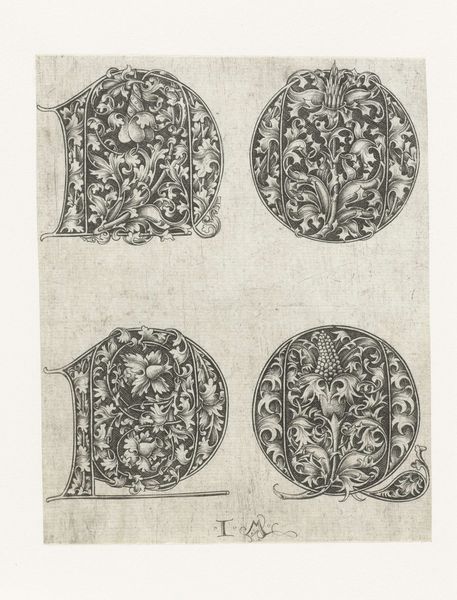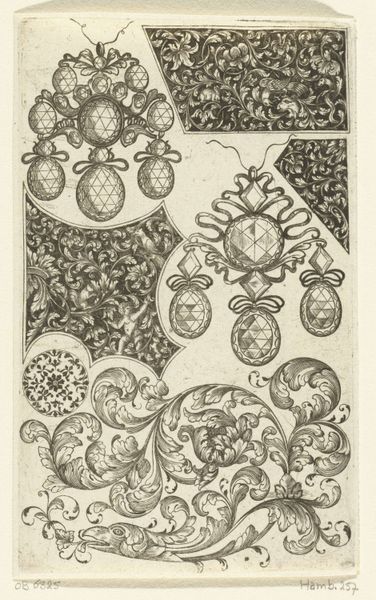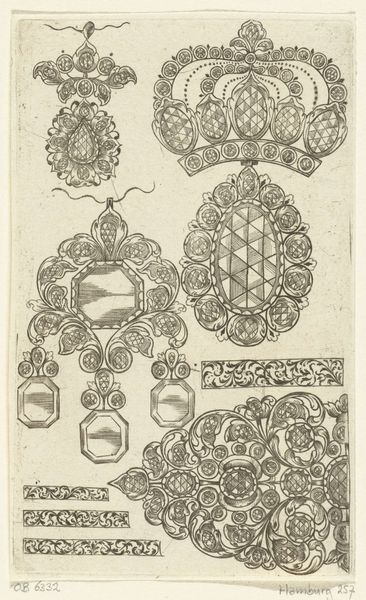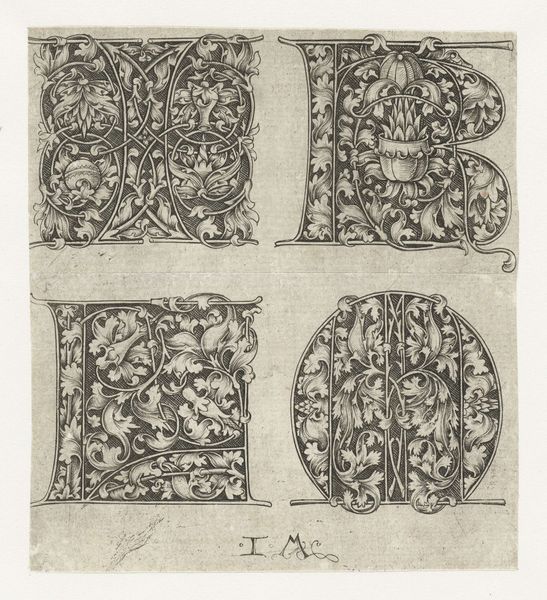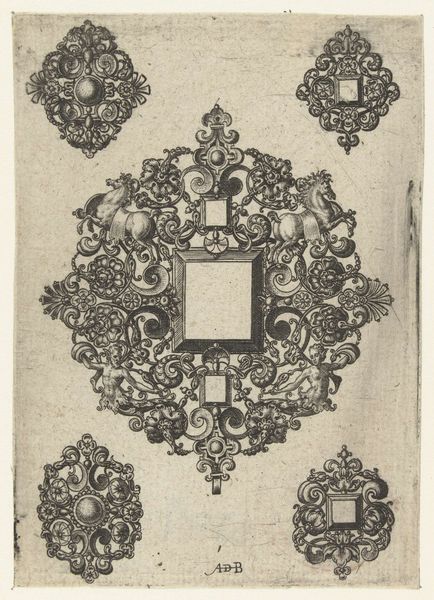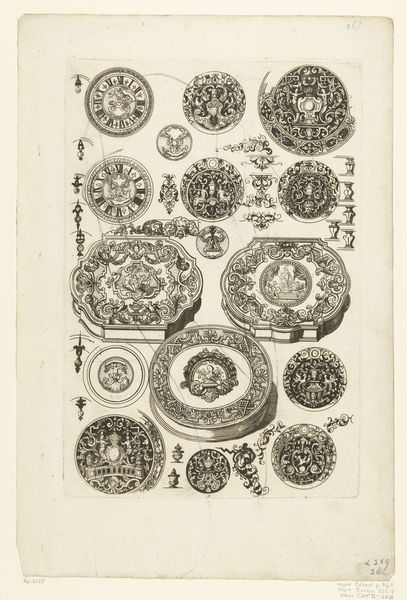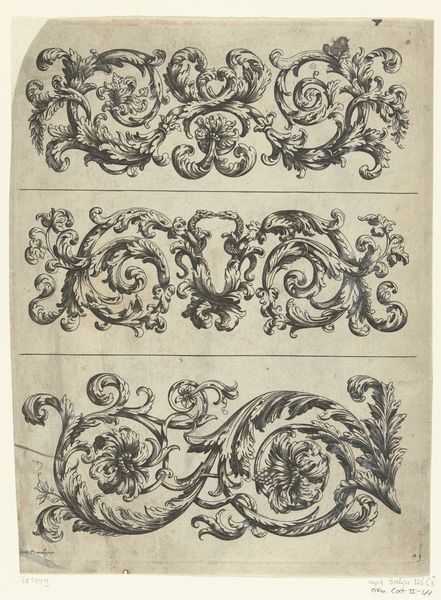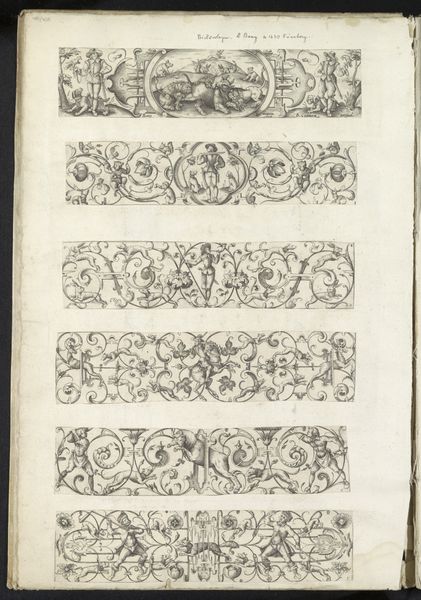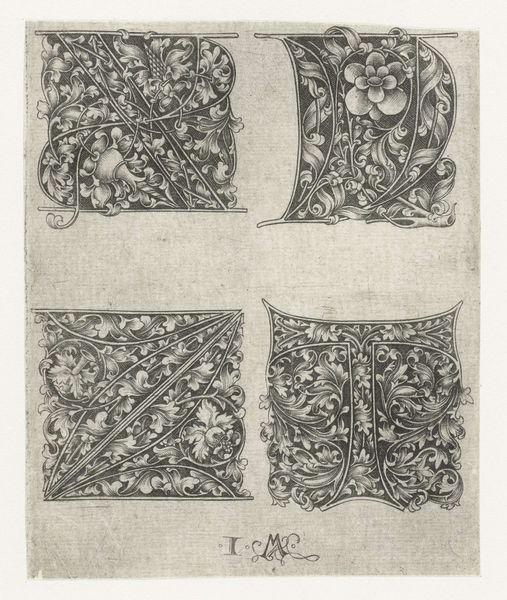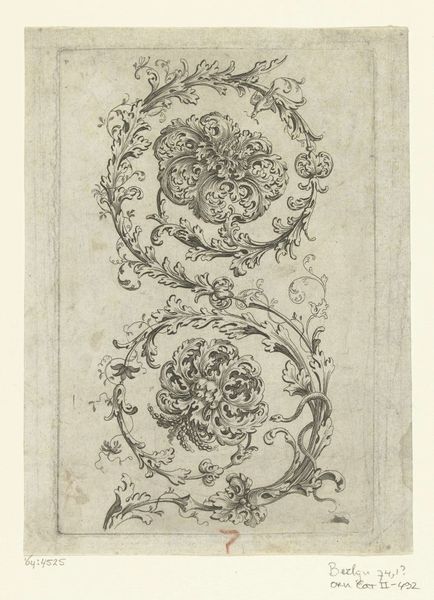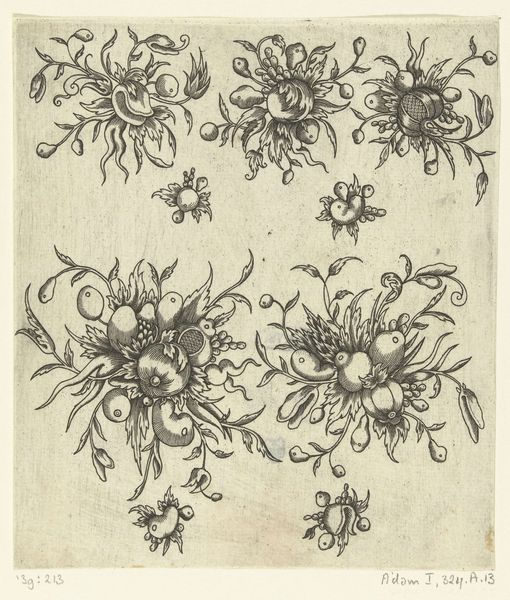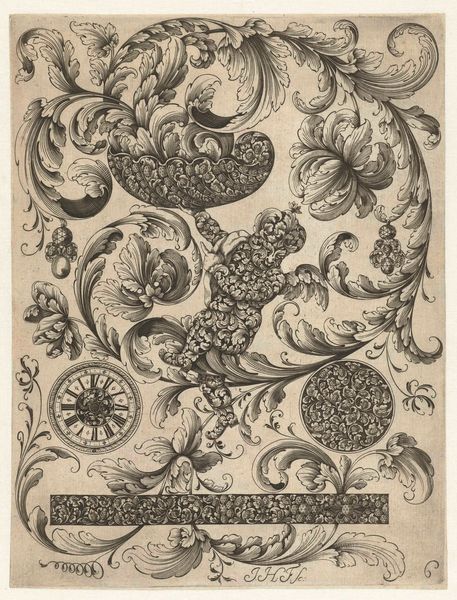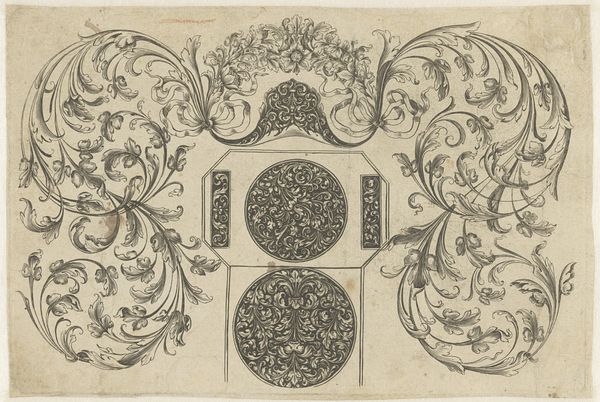
graphic-art, print, engraving
#
graphic-art
# print
#
old engraving style
#
form
#
personal sketchbook
#
geometric
#
line
#
northern-renaissance
#
decorative-art
#
engraving
Dimensions: height 144 mm, width 118 mm
Copyright: Rijks Museum: Open Domain
Editor: So, here we have "Hoofdletters R, S, T en U" or "Capital Letters R, S, T, and U" by Israhel van Meckenem, dated between 1455 and 1503. It's an engraving, a print, housed here at the Rijksmuseum. The detail is amazing, and it looks almost like each letter is its own tiny world of flora. What jumps out at you about this piece? Curator: What intrigues me is the labour. Consider the skill and time invested in creating these individual prints. Each line, each curve, meticulously engraved onto a metal plate. This isn't just about aesthetic beauty; it's about the physical act of creation, the almost devotional craft involved in reproducing letters, not just as text, but as decorative objects. How do you think these prints were disseminated and used? Editor: Maybe as examples for other artisans? Or even sold as individual decorations? The craftsmanship really does elevate them beyond simple letters. Were these kinds of prints common at the time? Curator: Yes, and the availability of prints, in general, played a huge role in disseminating ideas, decorative patterns, even political propaganda, all tied to the printing press and advancements in metallurgy. Consider the socioeconomic impact; who could afford them? What did they signify about their owner’s status? This intersects directly with consumer culture then, and what the consumption of art says about class. Editor: I never thought about the socioeconomic aspect before! I was just focused on the aesthetic beauty of the prints. Curator: And the "aesthetic beauty" as you said is equally bound to the socioeconomic conditions. These floral decorations for example -- where did van Meckenem draw his influences from? Was it commissioned, based on patrons' tastes or cultural symbols to flaunt certain affiliations? These are relevant because that also changes how we might appreciate their worth. Editor: Right, that makes me see them in a new light now, thinking about the production and the hands that created them and how that craft relates to class. Thanks for the insight. Curator: Likewise! It’s important to remember that art isn't made in a vacuum. It's product of the materials, processes, and socioeconomic contexts in which it’s created.
Comments
No comments
Be the first to comment and join the conversation on the ultimate creative platform.
